Yes, can dry eyes cause blurry vision. The blur often comes and goes, which can be confusing or even a little scary. Think of your tear film as a clear polish on a camera lens. It smooths tiny bumps on the eye’s surface so light focuses cleanly. When tears dry too fast or are poor quality, that smooth layer breaks apart and your view looks smeared, hazy, or foggy.
If your sight clears for a moment after a blink, dryness is a likely reason. This guide explains why dry eyes blur vision, how to tell it apart from problems like an outdated glasses prescription, quick fixes you can try today, and when to see a doctor. You will learn what triggers make it worse, which drops help most, and how long treatment can take. The goal is simple, clear up the haze and protect your eyes for the long run.
How Dry Eyes Make Vision Blurry and Why It Fluctuates
A healthy tear film is thin, stable, and smooth. It coats the cornea, the eye’s clear front window, and creates a polished optical surface. When that surface is even, light focuses sharply on the retina. When it is rough or patchy, light scatters and vision looks soft or smeared.
Dry eye makes the tear film unstable. Tears may evaporate too fast, or the mix of oil, water, and mucus is off. Tiny dry spots form between blinks. Those spots break the smooth surface and scatter light. Many people notice that a full blink briefly sharpens vision. That quick reset is a classic sign the blur is coming from dryness rather than from the glasses prescription.
Symptoms often travel together. Burning, stinging, or a gritty feeling, sensitivity to light, and even watery eyes can show up. Watery eyes may sound odd, but reflex tearing can happen when the surface is irritated. The tears in that surge are often poor quality, so they do not fix the root problem.
Screen time makes it worse. We blink less when we focus on phones or computers, sometimes cutting blinks in half. Fewer blinks mean more time for tears to evaporate. Long reading, driving with the vent on high, or sitting under a ceiling fan can have a similar effect.
If you are asking can dry eyes cause blurry vision, yes, and the on-again off-again pattern is a big clue.
How a healthy tear film keeps vision sharp
- Oil layer: A thin lipid coat from glands in the lids that slows evaporation.
- Water layer: The middle layer that hydrates and carries nutrients.
- Mucus layer: A sticky base that helps tears spread evenly over the cornea.
Together they create a stable, smooth surface for crisp vision.
What dry eye blur feels like vs blur that needs new glasses
Dry eye blur tends to fluctuate. It often clears after a full blink or a short rest. It may worsen late in the day or during long visual tasks. You might feel burning, stinging, a sandy sensation, or notice stringy, sticky mucus.
Blur that needs a new prescription is more steady. It does not snap clear after a blink. It may be worse at certain distances but stays fairly constant.
Common triggers that make dry eye blur worse
- Screens and long reading
- Air conditioning, heaters, and fans
- Wind, smoke, and low humidity
- Driving with vents pointed toward the face
- High altitude or airplane cabins
Small tweaks help, sit away from vents, blink often, and use a humidifier.
Why the blur comes and goes during the day
Blink rate drops during tasks that require focus. Tears sit longer on the eye and evaporate. Dry patches form and blur sight. A blink spreads fresh tears and resets the surface, so vision clears for a moment. Some people also have nighttime dryness from incomplete eyelid closure. Morning crusting, irritation on waking, or a sore spot along the cornea can point to that issue.
Causes and Risk Factors: Who Gets Dry Eye Blurry Vision and Why
Dry eye has many causes. Age plays a big role. Tear production tends to drop over time. Hormone shifts during menopause or pregnancy can change tear quality. Contact lenses pull moisture from the tear film. LASIK can reduce corneal sensation for a while, which can lower blink quality and tear feedback.
Allergies inflame the surface and can make the tear film unstable. Meibomian gland dysfunction, where the lid oil glands clog or thicken, leads to fast evaporation. High screen use, dry indoor air, and harsh environments make matters worse.
Health conditions can link to dryness. Autoimmune diseases, like Sjogren syndrome, rheumatoid arthritis, and lupus, can reduce tears or change their makeup. Thyroid disease can affect lid position and blink. Diabetes can alter nerve signals to the surface. Severe vitamin A deficiency is uncommon in developed countries, yet it can harm the ocular surface.
Medicines can dry the eyes, too. Antihistamines and some sleep aids reduce moisture. Many antidepressants have drying effects. Acne drugs like isotretinoin affect oil glands. Some blood pressure medicines and glaucoma drops, especially with preservatives, can irritate the surface. Do not stop a medicine without talking with your doctor. Sometimes a brand change or a preservative-free option helps.
Everyday habits that dry out eyes
Long screen sessions reduce blinking. Ceiling fans, car vents, and smoke pull tears off the eye. Low humidity speeds evaporation. Small shifts can help today, follow the 20-20-20 rule, sip water often, point vents away from your face, and keep a desktop humidifier near your workstation.
Health conditions linked to dry eye blur
Autoimmune diseases like Sjogren, rheumatoid arthritis, and lupus can damage tear glands or reduce tear quality. Thyroid disease may affect eyelid position, which can leave more eye surface exposed. Diabetes can reduce corneal sensitivity, so the blink signal weakens and the surface dries. The common thread is a stressed tear film that breaks up too fast.
Medicines that can cause dry eyes and blurry vision
- Allergy pills and cold medicines
- Sleep aids and some anti-anxiety medicines
- Antidepressants and some antipsychotics
- Acne medicines like isotretinoin
- Blood pressure medicines such as diuretics and beta blockers
- Some glaucoma drops with preservatives
Ask your doctor or pharmacist before changing any medicine. There may be alternatives or supportive care to protect the surface.
Contacts, LASIK, and makeup, special cases to know
Contacts increase evaporation and can disrupt the tear layer. They may also collect deposits that irritate the eye. After LASIK, many people have temporary dryness that blurs vision, usually improving over weeks to months. Oil-based or waterproof makeup can block the lid oil glands. Gentle removal and careful product choices help keep glands clear.
Quick Relief: Simple Steps to Clear Dry Eye Blur at Home
You can often improve comfort and clarity with daily habits. Start with blink breaks, better lid care, and the right drops. Adjust your space to protect your tear film. These are safe for most people and can sharpen sight today.
If you wonder, can dry eyes cause blurry vision during work, the answer is often yes. Target the triggers that show up in your day. Build a short routine you can repeat each hour when on screens.
Blink breaks that sharpen sight fast
Use the 20-20-20 rule. Every 20 minutes, look 20 feet away for 20 seconds. While you pause, do a blink drill, close your eyes for 2 seconds, gently squeeze for 2, then open. Repeat 5 to 10 times each hour during screen use. This reseats the tear film and calms the surface.
The right eye drops and how to use them
Choose preservative-free artificial tears if you need drops more than four times a day. Single-use vials reduce irritation from preservatives. Use them four to six times daily if needed. Thicker gel drops or ointments help at night, though they can blur sight for a bit after use. If you have meibomian gland issues, lipid-based drops can slow evaporation. Avoid frequent use of redness relievers. They can cause rebound redness and irritation.
Warm compress and eyelid care for better tear quality
Apply a clean warm compress or a microwaveable eye mask for 5 to 10 minutes. The warmth softens thick oils in the lid glands. After the compress, gently massage along the lid margins, from the base toward the edge, to encourage flow. For lid hygiene, use diluted baby shampoo or lid wipes if advised by your doctor. Keep the pressure light and avoid rubbing the eyeball.
Smart environment fixes at work and home
Place a desktop humidifier near you. Move seats away from vents and fans. Wear wraparound glasses outdoors on windy days. Adjust your screen a bit below eye level so your gaze is slightly downward. That small tilt reduces exposed eye surface and slows evaporation. Drink water through the day and limit very dry environments when possible.
Long-Term Care and When to See a Doctor
Some cases need medical care to rebuild the tear film and calm inflammation. Knowing when to seek help saves time and protects sight. Doctors can test your tear stability, look for blocked glands, and tailor treatments that last.
Prescription drops calm surface inflammation and promote natural tear balance. In-office treatments clear glands and keep tears on the eye longer. Results are real, but they take time. Expect weeks to months for full benefit with medicines.
Ask about costs and insurance coverage. Some treatments are covered, others are not. A clear plan makes it easier to stick with care.
Urgent red flags vs routine dry eye visits
Urgent now: sudden or severe vision loss, eye pain, trauma, halos with headache and nausea, flashing lights or a dark curtain, or chemical exposure.
Routine soon: blur or discomfort for more than two weeks, night driving trouble, contact lens intolerance, or poor relief from over-the-counter drops.
Prescription treatments that rebuild tear film
Cyclosporine and lifitegrast reduce surface inflammation. Benefits often start in 4 to 12 weeks, with continued gains after that. Varenicline nasal spray can stimulate natural tears and may be helpful for those with reduced tear production. Short steroid tapers can calm flares under doctor care. These are time-limited and monitored to protect eye pressure and the surface.
In-office procedures that target the root cause
Punctal plugs help keep tears on the eye longer by slowing drainage. Thermal pulsation treatments warm and massage the oil glands to improve flow. Intense pulsed light can reduce inflammation around the lids and improve oil quality. Microblepharoexfoliation cleans stubborn debris and biofilm along the lashes and gland openings. These steps support a stable tear film.
Tests doctors use to find your cause
- Tear break-up time: measures how fast the tear film breaks after a blink.
- Ocular surface staining: highlights dry spots and irritation on the cornea and conjunctiva.
- Schirmer test: measures tear production with a small paper strip.
- Osmolarity: checks tear saltiness, which rises when tears are unstable.
- Meibography: images oil glands to assess structure and dropout.
The right mix of tests points to the cause and guides a personal plan for clearer vision.
Conclusion
Yes, dry eyes can cause blurry vision, and the blur often comes and goes. The tear film is your eye’s clear polish, and when it breaks up, sight turns hazy. The good news, small daily steps combined with the right care can restore clarity.
Start with this quick checklist: hydrate, schedule blink breaks, warm compress once or twice a day, preservative-free drops as needed, and add room humidity. If symptoms last more than two weeks or affect driving, reading, or work, book an eye exam. A tailored plan can protect your eyes for the long term. Your vision deserves a smooth, steady surface, and you can get there with consistent care.
Related post: How Does Blue Light Affect Sleep
FAQs: Dry Eyes and Blurry Vision
Can dry eyes really cause blurry vision?
Yes. Tears form a smooth optical surface on the cornea. When the tear film breaks up or evaporates too fast, the surface turns rough, light scatters, and vision blurs. This often clears after blinking or using lubricating drops.
Why does my vision fluctuate during the day?
Tear quality changes with fatigue, screen time, air flow, and humidity. Eyes dry out as the day goes on, so blur often worsens in the afternoon or evening. Blinking or rewetting drops can give quick relief, at least for a while.
Is dry eye blur different from a glasses or contact lens issue?
Usually. Refractive errors cause steady blur at certain distances. Dry eye blur is variable, often improves right after a blink, and can come with burning or a gritty feeling.
Can dry eye blur affect just one eye?
Yes. Dryness can be uneven, especially with contact lens wear, eyelid issues, or past surgery in one eye.
What symptoms often come with dry eye related blur?
Burning, stinging, grittiness, redness, watery eyes, light sensitivity, and eye fatigue. Many people also report glare or halos at night.
What triggers can make dryness and blur worse?
Air conditioning, heaters, wind, smoke, low humidity, long screen sessions, reading, driving, and infrequent or partial blinking. Some makeup removers and eyelash extensions can also irritate the lid margin.
Do screens cause blurry vision from dry eyes?
They can. Screen use cuts blink rate and leads to more incomplete blinks, so tears evaporate faster. Follow the 20-20-20 rule, blink fully and often, and use lubricating drops if needed.
Can allergies cause dry eye blur?
Yes. Allergies inflame the surface and can destabilize tears. Oral antihistamines reduce tear production too, which increases dryness and blur. Cold compresses and preservative free drops may help.
Can contact lenses trigger blurry vision from dryness?
Yes. Contacts can disrupt the tear film, especially at the end of the day. Try rewetting drops made for contacts, reduce wear time, switch to daily disposables, or discuss lens materials that hold moisture better.
Which medications can dry out eyes and blur vision?
Common culprits include antihistamines, decongestants, some antidepressants, acne drugs like isotretinoin, diuretics, some blood pressure medicines, and birth control pills. Ask your doctor before changing any medication.
Is blurry vision from dryness ever an emergency?
Get urgent care if blur is sudden and severe, or comes with eye pain, marked light sensitivity, a red eye that hurts, a curtain or shadow in vision, or headache with halos and nausea. Those signs can point to problems beyond dryness.
How do eye doctors confirm dry eye related blur?
They check the cornea and lids with a slit lamp, measure tear breakup time, stain the surface with dyes, test tear volume with a Schirmer test, and evaluate the oil glands in the lids. These show whether tears are low, poor quality, or both.
What treatments help clear vision when dryness is the cause?
- Lubricating drops, preservative free if used often
- Gels or ointments at night
- Warm compresses and lid hygiene for oil gland function
- Prescription drops like cyclosporine or lifitegrast
- Short steroid courses for flares, guided by a doctor
- Punctal plugs to slow tear drainage
- Moisture goggles, humidifiers, and environmental changes
How fast should vision clear after using drops?
Relief can be quick, often within minutes. If the corneal surface is irritated, consistent treatment may take days to weeks to restore clear, stable vision.
Are preservative free drops better?
If you use drops more than 4 times a day, yes. Preservative free options reduce irritation and are safer for frequent, long term use.
Will drinking more water help?
Mild dehydration can worsen dryness, so steady fluid intake helps. Hydration alone rarely fixes dry eye, but it supports other treatments.
Do omega-3s help with dry eye and blur?
Some people notice fewer symptoms with omega-3s from fish or supplements, though study results are mixed. Talk with your clinician about dose and safety, especially if you take blood thinners.
Do warm compresses or humidifiers make a difference?
Often, yes. Warm compresses improve oil flow from eyelid glands, which stabilizes tears. A humidifier adds moisture to dry indoor air and can reduce evaporation.
Can LASIK or cataract surgery cause temporary dryness and blur?
Yes. Both can reduce corneal sensation and disrupt the tear film for weeks to months. Most cases improve with time, lubricants, and lid care. Persistent symptoms deserve a follow-up visit.
Is it safe to drive with dry eye related blur?
If blur or glare affects clarity, avoid driving until vision stabilizes. Use drops before night driving, reduce air vents to the face, and take breaks to blink and rewet.
Can kids or teens get dry eye that blurs vision?
They can, especially with heavy screen use, contact lenses, or allergies. Encourage regular breaks, full blinking, and proper lens hygiene. Seek care if symptoms persist.
Can pregnancy or menopause worsen dry eye blur?
Yes. Hormonal shifts change tear production and oil quality. Symptoms often improve after pregnancy, but menopause related dryness may need ongoing care.
Can blepharitis or meibomian gland dysfunction cause blur?
Yes. Blocked or inflamed lid glands lead to poor tear quality and fast evaporation, which blurs vision. Daily lid hygiene, warm compresses, and targeted treatments can help.
When should I see an eye doctor?
If blur persists despite drops, affects daily tasks, or comes with pain, redness, or light sensitivity, book an exam. Regular checkups matter if you wear contacts, had eye surgery, or take medications that dry the eyes.


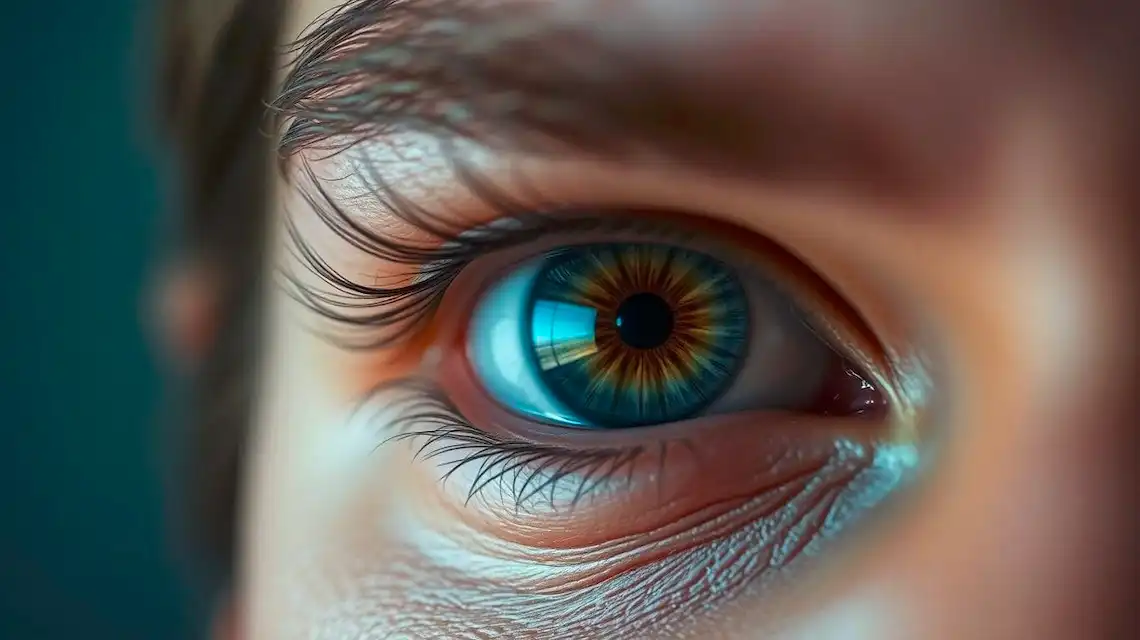

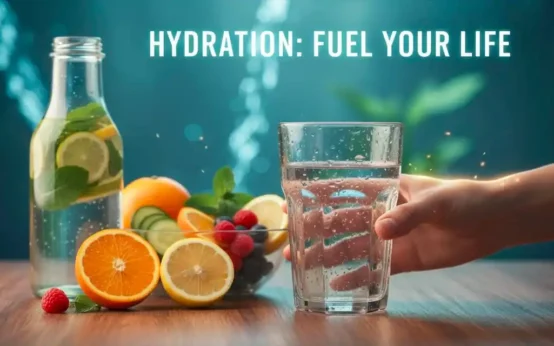 Importance of Hydration for Your Brain, Body, and Everyday Energy
Importance of Hydration for Your Brain, Body, and Everyday Energy 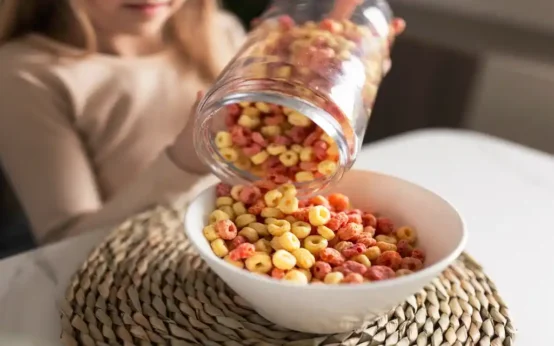 Healthiest Breakfast Cereal for Children
Healthiest Breakfast Cereal for Children 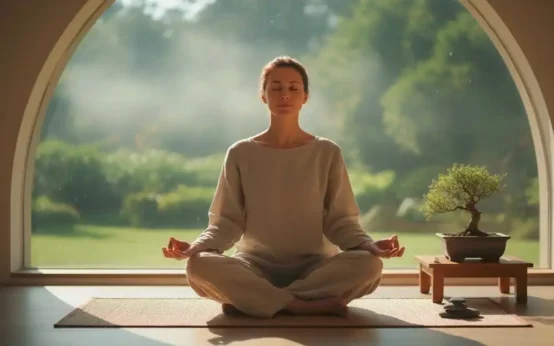 Anxiety Management Techniques
Anxiety Management Techniques  What Makes Fat in Our Body?
What Makes Fat in Our Body?  Best Diet to Reduce Risk of Diabetes
Best Diet to Reduce Risk of Diabetes 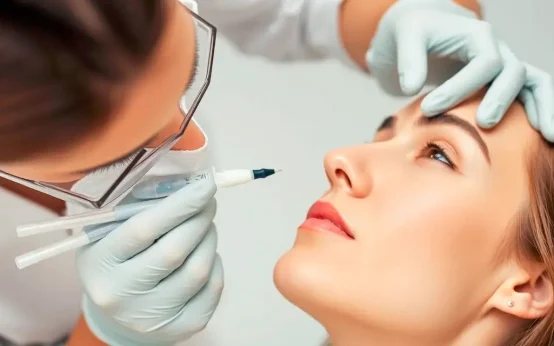 Long Term Effects from Botox
Long Term Effects from Botox